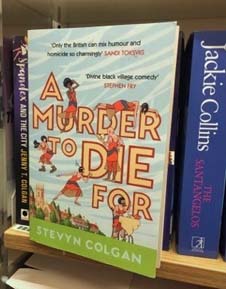Last
Posting
It has been another depressing month for funerals, this time
of my chum Reg Gadney, an academic who straddled the world of art and film, a
thriller writer of some renown, an award-winning television scriptwriter and
accomplished painter.
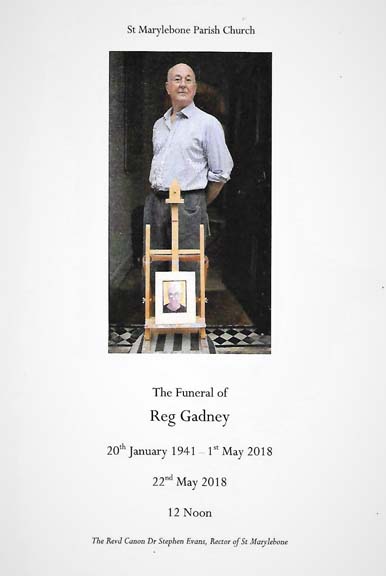
His funeral, in Central London, was attended by
representatives of all the worlds he had been involved with, including
playwright David Hare, actor Bill Nighy and film director Don Boyd and, as a
former Coldstream Guards officer, there was even a uniformed bugler to play the
Last Post.
I was fortunate to know Reg for the last six years of his
life and had the honour of editing new editions of his first two thrillers from
1970 and 1971, with covers designed around Reg’s paintings.
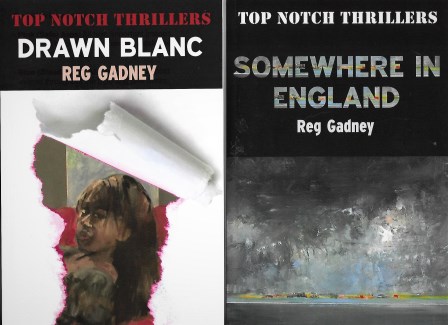
I think Reg was pleased with them as he painted my portrait,
deliberately making me rather severe ‘as editors should be’, as a thank you.
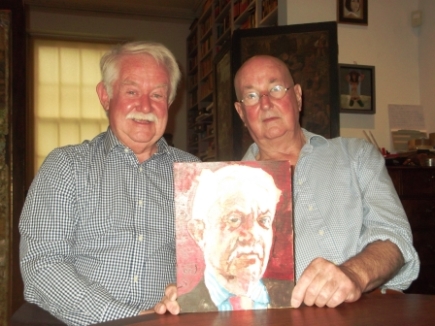
Reg died, aged 77, after a long battle with pancreatic cancer
on 1st May, two days before his last novel Albert Einstein Speaking was
published by Canongate. It is not a thriller, but rather an ingenious and at
times impishly funny fictionalised biography of the great scientist and I
recommend it most highly.

Ambler
Still Lying
Legend has it that when Eric Ambler’s cheekily-titled
autobiography Here Lies Eric Ambler was published in 1985, many of his fellow
thriller writers complained that he had perhaps been too circumspect, not to
say vague, and surely must have more stories about thriller writing, fellow
writers and working in Hollywood up his sleeve. Ambler is supposed to have
replied ‘Don’t worry, you’ll all be in Volume 2!’ but when The Story So Far was published in
1993, it showed Ambler was still being economical with the full story.
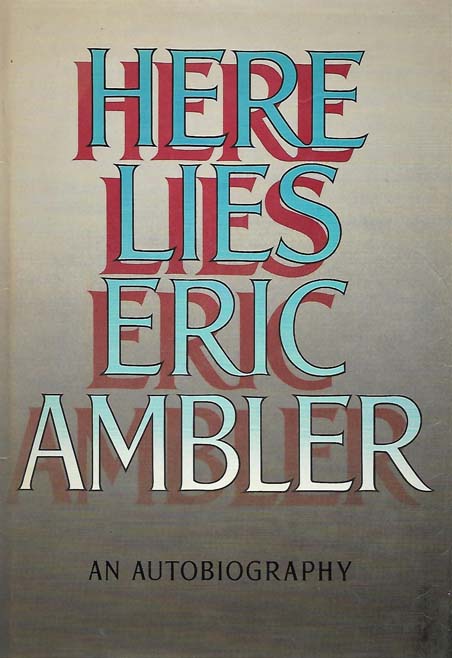
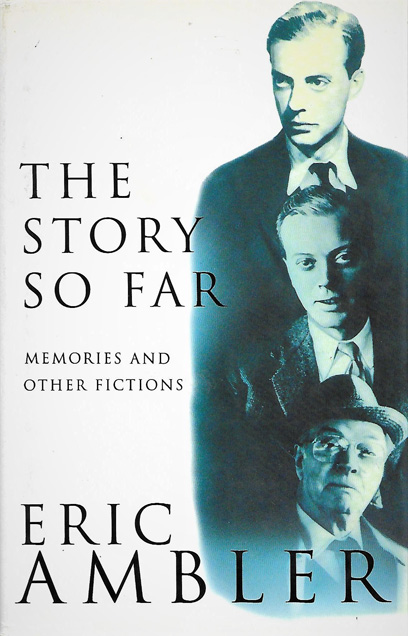
Ambler’s second volume of ‘Memories and Other Fictions’ is
heavier on the fictions than the memories with nine short stories interspersed
with snippets – far too few and skimpy – of Ambler’s life in Hollywood (he was
good friends with Alfred Hitchcock), Switzerland and finally returning to his
native London. Very few fellow authors get a mention, not even Australian
Charles Rodda (Gavin Holt) with whom he co-wrote several thrillers under the
pen-name Eliot Reed.
He does acknowledge Julian Symons whom, he thinks, proposed
him for the elite Detection Club in 1952 when Dorothy L. Sayers was president,
although he maintains he was never ‘initiated’ as he was ‘not given to swearing
foolish oaths’ and was about to decamp for America.
On his return to England in the late 1970s, he was, however,
pleased to find the Detection Club still functioning. ‘Fortunately for me, Miss
Sayers no longer attended meetings.’ (She had died in 1957!) ‘I cannot believe
we would have seen eye to eye on almost anything.’ And when the Club asked for
a detective story to celebrate Julian Symons’ 80th birthday, Ambler
said he was ‘happy to try’. That short story, The One Who Did For Blagden Cole, which is the conclusion of The
Story So Far, appeared in the 1992 anthology The Man Who, edited by H.
R. F. Keating and was probably the last piece of fiction Ambler wrote in a
career which lasted more than half-a-century and was instrumental in
transforming the British thriller.
De-Blake-ing
My mention of Jack Trevor Story and his connection to the
‘Sexton Blake library’ in last month’s column provoked numerous responses, some
from those who fondly remembered the work of Story and others who fondly
remembered the Sexton Blake stories as they appeared in myriad form over more
than half a century.
One correspondent, Tony Bird, wrote in to tell me that Jack
Trevor Story had actually written so 20 Sexton Blake ‘novelettes’ and in 1962,
one: ‘became an undistinguished film with Donald Sinden and Adam Faith called Mix Me A Person. For whatever reason,
Sexton Blake was omitted from the film. I remember, as a youngster, having a
letter published in SBL (Sexton Blake Library) complaining about this shocking
omission!’
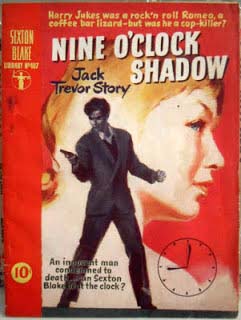
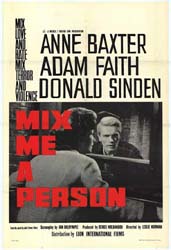
I then discover, courtesy of the blog run by the erudite
John Norris in America, that Jack Trevor Story had been doing what in the trade
was known as “de-Blake-ing”: taking a Sexton Blake book, rewriting it mainly by
removing the character of Sexton Blake, then giving it a new title and often
selling it on to a new publisher.
The film Mix Me A
Person (directed by Leslie, father of Barry, Norman) was actually based on
the novel Mix Me A Person by Jack
Trevor Story, published in 1958. That was in fact a rapid re-write of Nine O’clock Shadow, his Sexton Blake ‘novelette’
of 1957, which he suitably de-Blaked, making a female psychiatrist his lead
detective character.
So technically, this was not a Sexton Blake film without
Sexton Blake, though if it had been, I would have blamed Donald Sinden, who
seemed to be something of a jinx in these matters. In 1956 he starred in the big
screen adaptation of Margery Allingham’s Tiger
in the Smoke, a film infamous for having dispensed entirely with Allingham’s
famous detective Albert Campion.
The
Complete Durbridge
Whenever I am asked – which is occasionally – about Francis
Durbridge, who was a household name in Britain and parts of Europe for a fair
chunk of the 20th century, I always reply ‘I know nothing, but I
know a man who knows everything.’
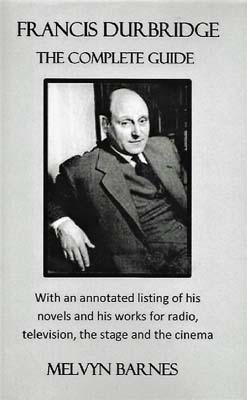
Francis Durbridge (1912-1998) was a prolific writer of crime
fiction, not just novels but also for the stage, radio and television over a
period of around sixty years, his most famous creation probably being the
detective Paul Temple. The man who has studied and catalogued his considerable
output with scholarly thoroughness, is Melvyn Barnes, O.B.E., a former
president of the Library Association and, it has to be said, something of a fan
of crime fiction, to put it mildly.
Now, twenty years after Durbridge’s death, Melvyn has
written what is surely the definitive guide to his work – and I’m not just
saying that because it says that on the cover of Francis Durbridge The Complete
Guide now published by Williams and Whiting.
Telling A Book by its Cover
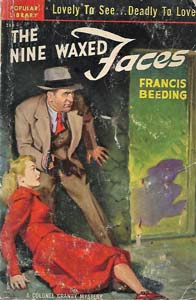
At first glance, you might think this 1950 American
paperback of The Nine Waxed Faces was, well, a 1950s American pulp crime
novel, perhaps involving G-Men or an over-dressed private eye. The tag line
‘Lovely To See…Deadly To Love’ only adds to that impression.
In fact, The Nine Waxed Faces by Francis
Beeding (a prolific two-man writing team) was a 1936 very British spy thriller
set in a Europe on the edge of meltdown. Beeding’s thriller were immensely
popular in the 1930s, with far bigger sales than those of ‘Golden Age’
detective writers, though the author(s) also wrote cracking crime stories as
well. I am working my way through the
thrillers of ‘Francis Beeding’ and others, with a view to discovering just how
soon British thriller writers realised that the Nazis and their methods were a
genuine threat to peace and civilisation and also ideal villains for their
fiction.
I may well submit my findings for a PhD; there again, I may
just bore you with an article on the subject in this esteemed organ.
Team
Players
Writing partnerships such as ‘Francis Beeding’ (John Palmer
and Hilary St. George Saunders) are not uncommon, but married co-authors are. The best- known couple who manage to live
together and write together without (seemingly) to murder each other is
probably ‘Nicci French’ the writing name of Sean French and Nicci Gerrard, who
have a new novel, Day of the Dead out from publisher Michael Joseph in July.
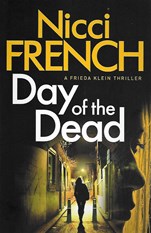
In August another married couple enters the crime fiction
lists with a medical mystery set in 19th century Edinburgh, The
Way of All Flesh published by Canongate and written by Ambrose Parry,
the pen-name of husband-and-wife team Christopher Brookmyre and Dr Marisa
Haetzman. That the novel is grounded in fact should come as no surprise, given
that Marisa Haetzman is a consultant anaesthetist who also holds a Master’s
degree in the history of medicine.
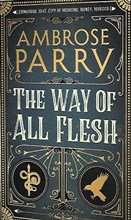
Bagley Remembered
Desmond Bagley (1923-83) was one of the biggest names in British adventure-thriller writing in the 1960s and ’70s and, unusually, a writer much loved by readers, publishers and other writers in equal measure.

He lived for many years on the island of Guernsey where, last month, he was duly honoured, with an official blue plaque unveiled at his home, Câtel House which has been re-named Bagley Hall and an exhibition in the Guilles-Allés library in the island’s capital St Peter Port.
Masterminding the exhibition and giving a lecture to mark its opening was Bagley uber-fan Philip Eastwood, whose website www.thebagleybrief.com is a fund of information about Bagley and his books.
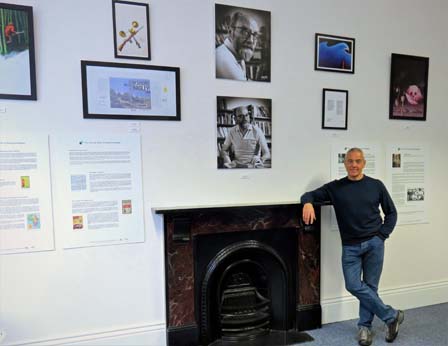
Rula Rules, OK?
I all-too-rarely cover audiobooks as I am not a particular fan of the medium, despite many of my friends being resting members of Equity. However, I have to express a pang of jealousy over the fact that my old chum Stevyn Colgan has secured the services of the mellifluous Rula Lenska to do the honours on his wonderful spoof cosy mystery A Murder To Die For.
